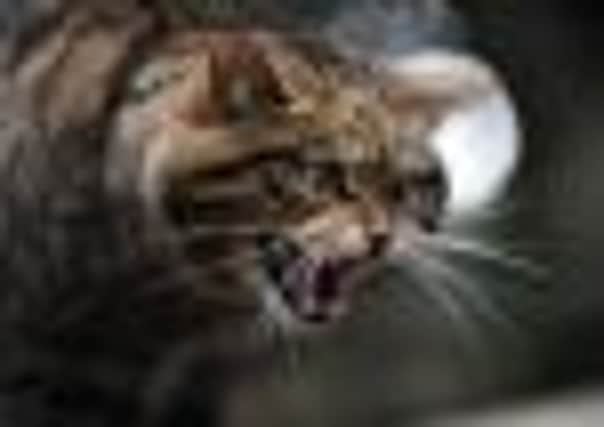Wildcats could be released across Scotland under plans to save ‘Highland Tiger’


• Breeding programme could see wildcats in the wild across Scotland
• Latest estimates put remaining population at just 400
• Wildcats prefer woodland and prey on mice and voles
A newly established wildcat conservation taskforce has proposed a major breeding programme to produce new populations in captivity which would then be introduced into areas where their chances of survival are greatest.
Advertisement
Hide AdAdvertisement
Hide AdCamera surveys to confirm existing numbers and establish the best habitats are due to begin over the coming winter.
Although they are nicknamed the Highland Tigers because most of the last remaining creatures hide in the northern mountainous region, anywhere with woodland for cover and limited disturbance from people could provide a suitable location for wildcats.
The surveys could also lead to the last members of the dwindling wild populations being moved to better habitat.
The proposals from the first meeting of the Scottish Wildcat Conservation Action Group were revealed yesterday, a fortnight after a report revealed that the predators could be wiped out within months, with fewer than 35 pure-bred cats thought to remain.
Jenny Bryce, wildlife ecologist at Scottish Natural Heritage Survey, which is leading the new group, said: “This is still in the very early stages but it would be the first time that Scottish wildcats were moved from one place to another. In order to move them we would need a good population to use as a source so this would be something that would be further down the line [if it is done].
“It could involve moving animals from the wild, or from a captive breeding programme ... Wildcats like a wooded habitat for cover adjacent to other habitat with prey such as mice and voles. They are mostly found in the Highlands but coastal areas are probably also quite good.”
The Scottish Wildcat Association, which published the worrying report on numbers and is also a member of the action group, said the meeting was a “strong step in the right direction.”
Spokesman Steve Piper said: “I think everyone appreciated the urgency and need for very diverse groups to coordinate exceptionally well and give the wildcat a fighting chance – but we must keep up the momentum.”
Advertisement
Hide AdAdvertisement
Hide AdThere is a successful breeding programme at the Highland Wildlife Park near Kingussie, which currently has 11 wildcats, but none of the animals are released into the wild.
Wildcats are under growing threat through a combination of persecution and cross breeding with feral and domestic cats.
They are notoriously hard to identify accurately, even in daylight. Previous estimates before the SWA’s report this month put numbers at around 400.